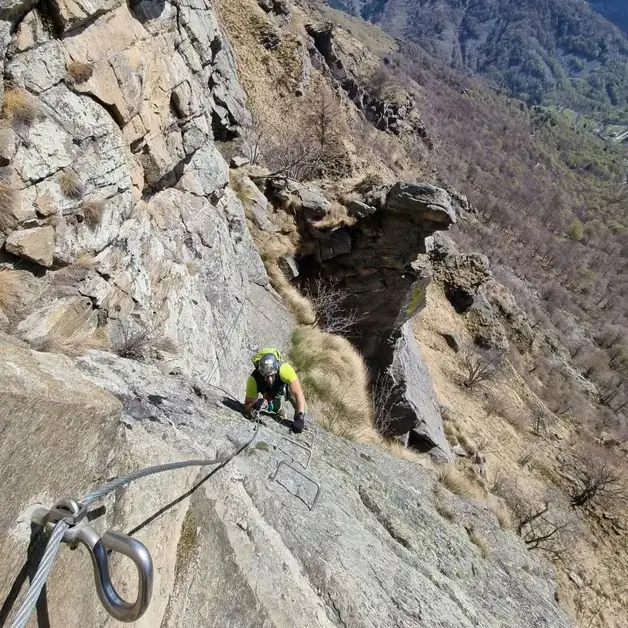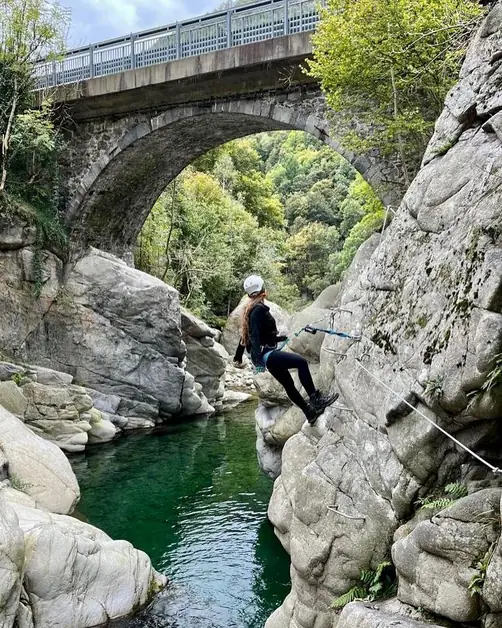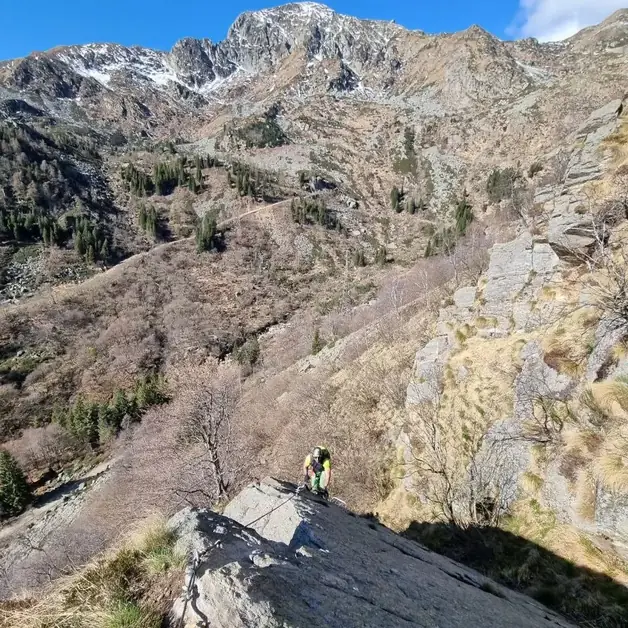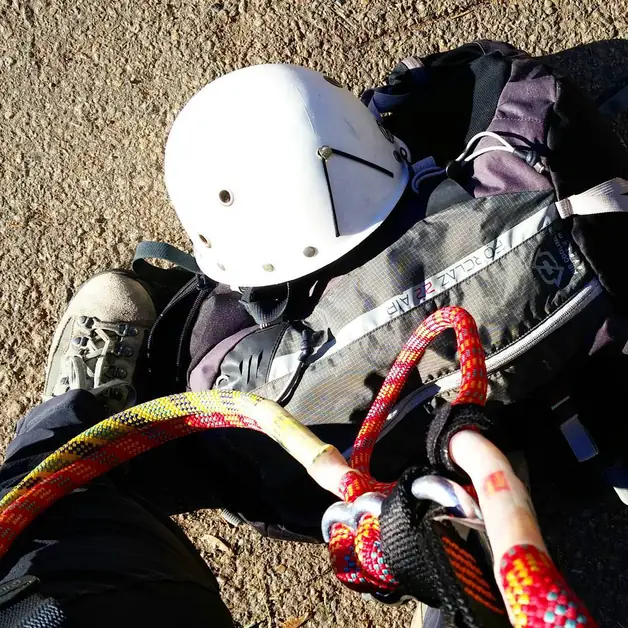Ferrata Ciao Miki an unforgettable adventure in Piedmont
The Ferrata Ciao Miki in Oropa is an unforgettable experience for adrenaline and nature lovers.

Where is the Ferrata Ciao Miki and why is it one of the most spectacular in Biella?
The Ferrata Ciao Miki is located in the Oropa area, in the heart of the Biella Prealps, and represents one of the most fascinating experiences for lovers of via ferrata in Piedmont. The route is short but intense, with a combination of four vertical towers and numerous traverses and gentle descents. Some passages are slightly overhanging, but always well equipped. The ferrata develops along the rocky walls leading to the ridge of Monte Mars, the highest peak of the Biella Prealps at 2600 meters. The panorama is spectacular: on one side you dominate the Oropa Basin with the Sanctuary and on the other side the view opens up to Monte Mucrone and Monte Rosa.
Where does the Ferrata Ciao Miki start?
The starting point is the upper station of the Oropa-Lago Mucrone cable car, which is reached by starting from Biella and climbing up to Oropa. You park in the large square of the Sanctuary of Oropa, from where the cable car departs. From the upper station, at an altitude of 1900 meters, you follow the D23 trail to the left, passing the Savoia Refuge and continuing towards Lago Mucrone. Just before the lake, you turn along the same D23 trail, following the signs indicating Colle Rosso and Laghetto Rosso, until you reach Colle Chardon (2221 m). Near the pass, a fork signals the start of the via ferrata with a white sign (about 1h 15’ from the upper station).
How difficult is the Ferrata Ciao Miki?
The Ferrata Ciao Miki is classified as medium difficulty, but requires attention, good physical condition, and familiarity with the alpine environment. The route is very varied: it alternates vertical sections, horizontal passages, and exposed descents. The use of equipment is essential: helmet, harness with via ferrata kit and shock absorber, via ferrata gloves. The route is abundantly equipped with steps and steel cables, but some passages require a minimum of arm strength, especially in the short overhanging sections.
How does the Ferrata Ciao Miki develop?
The ferrata begins with a vertical wall on the left side of an edge, where you climb thanks to numerous metal steps. After the first tower, you continue on rock and earth steps diagonally to the left, following the ridge leading to Monte Mars. Next is a 15-meter wall, slightly overhanging at the beginning, leading to the top of the second tower. From here you briefly descend and face a new vertical wall with abundant steps and excellent natural handholds. After a short traverse to the left, you climb another rocky step and proceed diagonally, bypassing an edge. In this section, you encounter an exposed descent section on the left side of the ridge, followed by a delicate traverse passage. The third tower features a vertical wall with a slight overhang, where steps and natural holds alternate. After passing the rocky belly, the route becomes more regular and leads to a panoramic notch in the ridge. You then face other small rocky jumps and steps until you reach a white sign marking the end of the ferrata. Average time: 1h 30’ from the start (about 2h 45’ from the cable car).
What is the ridge path like towards Monte Mars?
After the ferrata, a long and spectacular ridge path begins that leads to the summit of Monte Mars. This part of the hike is very panoramic but also exposed and challenging, especially in wet conditions. You follow the ridge between narrow sections and passages on rocks (Grade I), with the help of fixed ropes in the most delicate points. The route is recommended only in stable weather conditions, absolutely avoiding rain. After about 2h 30’ of walking from the end of the ferrata, you reach the summit cross of Monte Mars (2600 m), an exceptional panoramic point over the Biella Alps, Monte Rosa, and the Piedmont plain.
How does the descent from Monte Mars take place?
The descent follows the D23 trail entirely, which leads back to Colle Chardon and then to the Oropa-Lago Mucrone cable car. The route takes about 1h 30’ to the upper station, for a total of about 6h 45’ of hiking.
When to tackle the Ferrata Ciao Miki?
The best time is from June to October, avoiding bad weather days. In spring, the high-altitude sections may still be snowy, while in autumn the light and colors make the environment particularly picturesque. Being a high-altitude route, it is advisable to leave early in the morning to avoid afternoon thunderstorms and to enjoy the clear view of the mountains.
What to see around Oropa and the Ferrata Ciao Miki?
The Oropa area is rich in natural and cultural beauties: the Sanctuary of Oropa, a UNESCO heritage site and one of the most important Marian places in Italy; Lago del Mucrone, easily reachable on foot from the cable car; the Botanical Garden of Oropa, with rare alpine plants; the Burcina Park, with its paths immersed in rhododendrons. Climbing enthusiasts can also explore the Mucrone cliffs, while those who love trekking can continue towards Monte Camino or Alpe Finestre.
Where to sleep and eat in Oropa and surroundings?
For those who want to spend a weekend in the mountains, there are several options: Savoia Refuge: a reference point for hikers and climbers. Rosazza Refuge, cozy and panoramic. Foresteria of the Sanctuary of Oropa, perfect for those seeking a spiritual atmosphere. Agritourisms in Sordevolo or Pollone, ideal for tasting authentic Piedmontese cuisine. The dishes to try are polenta concia, alpine cheeses, braised Nebbiolo, and chestnut desserts.
What other ferratas can be combined with the Ferrata Ciao Miki?
More experienced hikers can combine the Ferrata Ciao Miki with other routes in Biella, such as: the Ferrata del Limbo on Monte Mucrone; the Nito Staich Ferrata in Sordevolo; the Balma Ferrata in San Paolo Cervo; or the Attrezzato dell’Infernone Trail. These routes, all within 30-40 minutes distance, allow for a full day or weekend dedicated to the ferratas of Biella, among breathtaking views and authentic nature.


